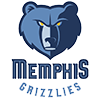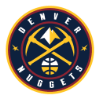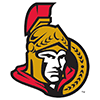The grind is real.
These last two weeks have been an utter whirlwind filled with nothing but baseball for breakfast, lunch and dinner (and in my case, fourthmeal). I spent a few days in New York participating in the Tout Wars H2H Auction with RotoWire's Clay Link and 10 other esteemed industry colleagues. That same weekend, I was drafting Jonah Keri's League of Leagues on the go with my partner, Rob Silver (last year's NFBC Main Event champ), who was at the marathon nine-hour draft in Las Vegas.
It was then back home to the West Coast for a few days to clean up my rankings and head straight to Vegas for the NFBC Main Event and the 15-team Auction Championship. Barely unpacked, I dove right into free agent bidding to pick up some scraps, lineup setting and preparing Monday DFS lineups. On Monday, reality kicked in, as it was back to the day job. I probably should have taken one more vacation day for Opening Day, but we can't have everything in life.
Reviewing someone else's draft even though draft season is over may seem pointless, but you should find value in the following recap. Besides, sharing my Main Event Vegas team has become an annual tradition for this column. I had a decent 2016 in my 12-team NFBC RotoWire Online Championship leagues, but had an awful taste in my mouth from last year's trainwreck of a Main Event team. My partner last year, Andrew Moody, could not make
The grind is real.
These last two weeks have been an utter whirlwind filled with nothing but baseball for breakfast, lunch and dinner (and in my case, fourthmeal). I spent a few days in New York participating in the Tout Wars H2H Auction with RotoWire's Clay Link and 10 other esteemed industry colleagues. That same weekend, I was drafting Jonah Keri's League of Leagues on the go with my partner, Rob Silver (last year's NFBC Main Event champ), who was at the marathon nine-hour draft in Las Vegas.
It was then back home to the West Coast for a few days to clean up my rankings and head straight to Vegas for the NFBC Main Event and the 15-team Auction Championship. Barely unpacked, I dove right into free agent bidding to pick up some scraps, lineup setting and preparing Monday DFS lineups. On Monday, reality kicked in, as it was back to the day job. I probably should have taken one more vacation day for Opening Day, but we can't have everything in life.
Reviewing someone else's draft even though draft season is over may seem pointless, but you should find value in the following recap. Besides, sharing my Main Event Vegas team has become an annual tradition for this column. I had a decent 2016 in my 12-team NFBC RotoWire Online Championship leagues, but had an awful taste in my mouth from last year's trainwreck of a Main Event team. My partner last year, Andrew Moody, could not make it to the draft last year, so I struggled to handle the live draft properly while on the phone with him for the entire four hours.
We started with Nolan Arenado and ended with Jose Ramirez, but struggled in almost every round in between! Our squad was hit with some bad luck injury-wise (Matt Harvey in the third round, Michael Brantley in the ninth, Matt Duffy in the 16th), but Moody and I also made some horrendous picks (Yan Gomes, 12, Nathan Eovaldi, Socrates Brito and Anthony Gose come to mind). We peaked early on key FAAB pickups (Hernan Perez, Michael Fulmer), allowing ourselves to get antsy and drop them before they embarked on their breakout campaigns. We notoriously chased nasty two-start pitchers who decimated our ratios (never again, Chase Anderson). All in all, it left an awful taste in our mouths, and redemption was the only answer.
Preparedness was the key to my offseason. Moody was unable to make it to Vegas last weekend, so I decided I'd be drafting and managing the entry myself. I also decided that I would make the full transition to drafting with software instead of half paper rankings, half software. I spent a couple of months incessantly tweaking my projections and tiers up until the day of the draft. Though I like to believe that my knowledge of the player pool is deep, I wanted to ensure that I wouldn't struggle with the endgame (picks 21-30) this season. I drew the 13th pick in the draft (my third KDS choice behind picks 1 and 2) based on the notion that I would kick things off with Madison Bumgarner, Noah Syndergaard or Max Scherzer while feeling comfortable with Miguel Cabrera, Charlie Blackmon, Carlos Correa or Joey Votto as my first hitter in the second round. As is the case at live NFBC drafts, things never go as planned.
Don't Look a Gift Horse in the Mouth
1.13 Paul Goldschmidt (1B, ARI)
2.03 Carlos Correa (SS, HOU)
Never in my wildest dreams did I expect Goldschmidt to fall here. Scherzer and Bumgarner were taken before my pick and I strongly considered Syndergaard with my first pick to stick with my plan before deciding to take the gift. I likely wouldn't have been able to live it down from my colleagues and fellow drafters had I passed on him. It took me 30 seconds, and NFFC champ Glenn Lowy yelled across the room, "What took you so long?" Goldy is the least-popular guy of the first-round crew, but he's as solid and safe as they come. There's legitimate concern about how new manager Torey Lovullo might negatively impact his players' steal totals – he was known to withhold the green light in the minors – so I marked Goldschmidt down for 13 projected bags.
Correa over Blackmon was a tough call as well; Blackmon was part of my original plan, he leads off for a powerhouse Rockies squad, and I expect an improvement in stolen bases. But given the depth in the outfield this season and the fact that Correa has consistently been drafted as a first-rounder by NFBC heavyweights over the past few weeks, I instinctively opted for the younger hitter at a scarcer position. The plan at that point was to grab a starting pitcher and A.J. Pollock (or Giancarlo Stanton) at my next turn, but I'd have to wait 28 picks for the opportunity.
3.13 Stephen Strasburg (SP, WAS)
4.03 Kenley Jansen (RP, LAD)
In hindsight, perhaps I should have grabbed Pollock – the guy I dubbed a "first-rounder in a third-round body" last month – first. At the point I took Strasburg, only he and Chris Archer were available among the second-tier arms. The team picking 14th started with Syndergaard and Yu Darvish, and the guy at 15 (ironically and uncomfortably, Rob Silver, my League of Leagues partner) started with Cabrera and Chris Sale. I assumed Rob would take one pitcher (Archer or Strasburg) at the 3/4 turn and that Team 14 would take two hitters. Since I preferred the NL arm and didn't want to take the chance that I'd be left empty-handed, I took Strasburg. Of course, Pollock was taken with the very next pick.
At 4.03 (pick 48 overall), I selected Jansen with only Aroldis Chapman off the board among the closers. My original plan was to take whichever closer was left at the next turn (5.13/6.03), but I didn't want to take a chance, as it was very likely that these closer-hawking vultures would not leave me with any scraps. At this point, I felt comfortable where I was, assuming that I could move in any direction now.
5.13 Matt Carpenter (1B/2B/3B, STL)
6.03 Kelvin Herrera (RP, KC)
Carpenter was part of the plan – one of the few guys I was hoping would fall to me with the 73rd overall pick. I've previously expounded on the value of multi-positional guys, especially in this format, and reading that Carp's back and oblique no longer bothered him gave me confidence in this pick. Being able to move Carpenter all around my infield should prove valuable during the season, and I made sure to bold and highlight a few other multi-positional targets for later. There really wasn't anyone else I was considering in this spot.
I selected Herrera over Craig Kimbrel, but it was truly a tough call. I felt that my ratios would be safer with Herrera in the AL Central and playing half of his games at Kauffman Stadium, though I can't deny Kimbrel's wicked strikeout rate (37.7 percent in his "down" season). Locking in two top-12 closers was important so that I wouldn't have to spend oodles of FAAB money over the course of the season chasing those dreaded saves.
7.13 Julio Teheran (SP, ATL)
8.03 Dallas Keuchel (SP, HOU)
Teheran was not someone I was targeting this season, but I was happy to take him a little after his ADP with Kenta Maeda and Gerrit Cole already off the board. I'm always cautious taking pitchers on sub-.500 teams, but Teheran is a horse and the offense is stronger this season. He isn't the big strikeout arm I desire in a second-round pick, but he's good at holding baserunners and has maintained a strikeout rate between 21 and 22 percent over the last five seasons.
Keuchel was a target in this range, and I didn't have any shares of him yet. He went from the 50th overall pick at this time last year to 150th, but he was never truly at full strength last season while dealing with a shoulder ailment. Though I like to play it a bit more risky that the average NFBC player, I trusted him in this spot more than James Paxton. My Keuchel selection felt justified when the guy at Pick 12 cursed out loud and scrambled for a backup plan.
9.13 Byron Buxton (OF, MIN)
10.03 Kendrys Morales (UT, TOR)
Buxton was never part of the rough plan. I take Scott Jenstad's opinion seriously, and he's not a fan of Buxton's, at least for this year. I did need some speed at this point in the draft and was still without an outfielder, so I was willing to take a shot at his upside as the Twins' No. 3 hitter this year. I vowed that I'd avoid hitters before round 20 with strikeout rates over 30 percent (Buxton's was 35.6 percent last season), but I'm intrigued by his pedigree, skill set and believe he'll hit at least 15 homers and steal 25 despite a likely harm in the batting average category.
If you've read anything from me this season or follow me on Twitter, you know that there's no bigger Kendrys Morales supporter this season. Morales was a no-brainer target for me this spring ,and I'm almost all-in, owning him on eight of 10 teams this season. Morales hit 30 or more homers for just the second time last season (12 of them at Kauffmann) and is in the money spot as the cleanup hitter for the Jays. It's worth noting that Rogers Centre is only a slight upgrade on Kauffmann in terms of home runs (17th in MLB Park Factor for homers in 2016), but the lineup around him is a grand improvement. Morales could start the season cold, and yet I wouldn't worry as long as he's healthy; it should be a scorching summer north of the border. It's worth noting that many astute NFBC players avoid the inflexibility of a utility-only guy. Of course, look how that worked out for those who avoided a 10th-round David Ortiz in 2016. Morales is no Papi, but .280-30-100 is realistic, and he may earn first-base eligibility by May (seven games in NL stadiums, so he would ideally need just three more starts at 1B).
Building the Supporting Cast
11.13 Kevin Kiermaier (OF, TB)
12.03 Garrett Richards (SP, LAA)
13.13 Logan Forsythe (2B, LAD)
14.03 Taijuan Walker (SP, ARI)
15.13 Randal Grichuk (OF, STL)
This portion of the draft couldn't have flowed smoother, as I acquired players that I deemed to be serious values compared to their ADPs. Kiermaier stole 21 bags along with 12 bombs in just 105 games last year and appeared unlucky (.278 BABIP underscored a paltry .246 average). He's a patient hitter with room for growth in terms of walk rate (9.7 percent last year, expecting double digits this year) and can approach 90 runs with 30 steals.
Forsythe is a target I featured three weeks ago – someone I made sure to grab a round early in every one of my drafts. Manager Dave Roberts featured rookie Andrew Toles as the leadoff hitter on Opening Day, while Forsythe hit sixth. It's a bit of a wrench in my projection, but Forsythe is expected to lead off against southpaws and could eventually earn full-time duty there should Toles struggle. No matter how it shakes out, I trust Roberts and his managerial instincts.
Grichuk was just the power bat I needed for the middle of my draft. He put that stroke on display Sunday night, and it's a good sign of things to come on way to his first 30-homer, 100-RBI season. I truly believe Grichuk matures as a hitter this season and ends the year with a respectable batting average.
Richards was a reach in comparison to his ADP (about 30 picks ahead), but given the long wait until my next set of picks, I wasn't willing to gamble that he'd last. Richards joins Teheran as another arm on my roster who plays alongside a subpar offense, but as long as his elbow is intact, he should benefit my ERA/WHIP categories and approach a 25 percent strikeout rate for the first time. I hesitated for a moment on Walker over teammate Robbie Ray, but opted for the higher-pedigreed pitcher who I believe finally puts it all together. Of course, the home park is a hindrance, but if Walker is able to harness his cutter, it will be the perfect complement to his split-change and 94 mph fastball. I was hoping to add Robert Gsellman as well, but when you're swimming with sharks, you're left holding the bait.
16.13 Travis d'Arnaud (C, NYM)
17.03 Domingo Santana (OF, MLW)
18.13 Travis Shaw (1B/3B, MLW)
19.03 Yangervis Solarte (3B, SD)
20.13 Charlie Morton (SP, HOU)
Yasmani Grandal or J.T. Realmuto would have been lovely as my first catcher, but I've basically been punting the position this draft season outside of a sixth-round Jonathan Lucroy in my latest 12-teamer. There are a handful of guys I believe will out-earn their draft slots (d'Arnaud, James McCann, Mike Zunino, Tyler Flowers, Chris Herrmann), and I was content to grab two of those. It's certainly playing with fire, as the last thing we want is to play musical chairs with untalented offensive backstops. For my catchers, I'm simply looking for guys who'll play plenty, have a bit of pop and won't crush me in batting average; d'Arnaud fit the bill as my first one at pick 228.
In DFS-esque fashion, one of my annual strategies is to target multiple players from offenses in good home parks that I'm expecting will sparkle. Last season, that was the middle of the Diamondbacks' lineup with guys like Jake Lamb and Yasmany Tomas. That was the plan once again this season, and I believed that would work with some of the value options on the Brewers – case in point here, Domingo Santana and Travis Shaw. Shaw had a phenomenal spring and opened the season with two doubles as the team's cleanup hitter. Noting that NFBC #GOAT Lindy Hinkelman also drafted Shaw that day only strengthened my confidence in the selection. Solarte is a late bloomer with great plate patience last season (14.2 percent strikeout rate) who could pop 20 long balls as the Padres' No. 3 hitter this year. Morton is no spring chicken, but his increased spring velocity (consistent 97 mph heat) increased his draft-day cost (Lindy picked him up in the 19th round of his Main Event).
Shame in the Endgame
21.13 – Melvin Upton Jr. (OF, released)
22.03 – Matt Bush (RP, TEX)
23.13 – Chris Herrmann (C, ARI)
24.03 – Shin-Soo Choo (OF, TEX)
25.13 – Brandon McCarthy (SP, LAD)
Blame it on the lunch break after Round 20, but I lost my mojo after feeding the old gut. I was sluggish immediately and did not have a backup plan when Ben Revere (my speed target) was snagged just a few picks before my 21st-rounder. I was unaware that Colby Rasmus hit the disabled list Sunday; had I known, I would have taken Mallex Smith in a heartbeat. Instead, I fell back on a player I dislike simply because he was one of the only guys at this point in the draft who offered the potential to nab 25-plus stolen bases. Here's hoping Upton lands with little brother Justin and the Tigers and seeks redemption after being released. I'll hold him for another couple weeks unless my hand is forced.
Since I didn't have a third closer and wouldn't touch Fernando Rodney, I opted for a guy I in Bush that believe will be knocking on the door of a ninth-inning role. I don't wish ill upon anyone, but if Sam Dyson can give up some more earned runs this week like he did Monday, I might be on the precipice of some more saves for my squad. Nate Jones would have been my primary choice, but he was snagged in the 19th round.
Herrmann has been one of my top C2 targets this spring, and it was reassuring to learn on the flight to New York for Tout Wars that Jeff Erickson felt the same way. Herrmann is one of three catchers on the Dbacks' roster, but will serve as the team's super utility guy and find his way into the lineup most days against right-handed pitchers. Herrmann had a solid 7:14 BB:K in 48 plate appearances in the spring.
Choo was available nearly 30 picks past his ADP, and I was sweating that round while hoping he would fall to me. Well past his prime, Choo's long list of injuries last season (fractured forearm, back, calf strain, hamstring strain) cost him 114 games and evidently scared many off him this year. However, Choo hit second on Opening Day with a righty on the mound and should stick in that spot as long as he can stay healthy. He was an immediate addition into the Week 1 lineup with Upton currently homeless.
McCarthy was an easy call in the 25th given the lack of starting pitchers available this late in a 15-teamer and the fact that he calls a prodigious pitcher's park home. Run support shouldn't be an issue for Dodger arms once again this season.
26.03 Jesse Chavez (SP, LAA)
27.13 JaCoby Jones (3B, DET)
28.03 Jordan Montgomery (SP, NYY)
29.13 Corey Knebel (RP, MLW)
30.03 Yandy Diaz (OF, CLE)
No amount of research can truly prepare you for the last few rounds of a live 15-team draft. It was a point of emphasis for me after previous experiences, and yet still I walked away disappointed after what I believe was a strong start. This is my group of expendables, depending on what's available in FAAB this April.
A notorious second-half fader, Chavez had a strong spring and earned the role of the Angels' fifth starter. The Yankees have not announced their fifth starter yet (nor will they need one until the middle of April), but it was hard to ignore the scouting report of Derek Van Riper's Short Hops podcast co-host (and former pro scout) Bernie Pleskoff, who wrote up a gleaming review of the 24-year-old. Montgomery is an easy drop if Chad Green is named the Yankees' No. 5.
Knebel is one of my under-the-radar picks to take over closing duties early this season. Manager Craig Counsell has never officially named Neftali Feliz as the ninth-inning guy. Though the Brewers signed Feliz to a hefty one-year deal in the offseason, Knebel is the superior arm. He's had issues with control, but Knebel quelled some of those concerns with a solid showing in the spring – 10 innings with 17 strikeouts and just two walks. Having flexibility for Friday-Sunday moves for your offense is a key component to NFBC success, but if my current offense stays healthy, I can wait a couple weeks to see if either Bush or Knebel can emerge as a closer. NFBC vet and former PrimeTime champ Emmett Ruland will get the credit if Knebel takes over early on.
Jones was a snap-judgement selection based on a strong spring and manager Brad Ausmus' promise to start him in centerfield against right-handed pitchers. Diaz was the quintessential "he's in the starting lineup" final pick. He's listed as an outfielder in NFBC but is playing third base for the Indians with Jose Ramirez covering second while Jason Kipnis is out. Jones is listed at third base, he'll soon be eligible in the outfield. The Jones notion is moot, though, since he was my lone Sunday drop as I picked up Paulo Orlando for $39 (of my $1,000 budget); he'll provide some speed with a regular lineup slot while Jorge Soler is on the disabled list.
Wish me luck as I look to avenge last year's disappointing showing in the Main Event. Not a shabby start to the season with Strasburg, Teheran and Keuchel handling their business on Monday.
Next week, we'll dive back into the regular format of risers and fallers. Be sure to take note of lineup slotting and take platoon splits into account. Toles, Adam Frazier and Seth Smith only led off on Opening Day because a pitcher of opposite handedness was on the mound. Ditto for Matt Joyce, who hit second for the A's on Monday and is an extreme splits guy we can take advantage of in twice-weekly formats like the NFBC. Beware the desire to react quickly to overperforming players this week, but be sure to balance that with the necessary swiftness of acquiring players you believe will be season-long contributors. More on that in next week's edition.








































